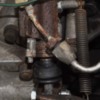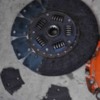I am new hear. I did some searching, but found the results hard to navigate, so I have started a new thread. I am pulling my trans-axle to replace the throwout bearing. I have worked on my Mitsubishi lancer evo, but never anything this old. I need tips on a few of the things that I will encounter. Pictures would be excellent, but any advise is greatly appreciated.
1) Where should I jack the car, and place the Jack stands, ? (every car I have worked on is uni-body, but I know that this has a frame.)
2) Do I need it on jack-stands, or can I leave it on the wheels? (I also have wheel ramps)
3) This is the most important. How should I support the engine? I plan to build a support from 2 by 4s that surrounds the oil-pan, and sits on my floor jack, but has supports for 2 jack stands in case I need the jack for something else.
4) Do I need to grease the PI throwout bearing, if so where should I grease and how much. I know I don't want grease on the clutch disk and flywheel.
Original Post





